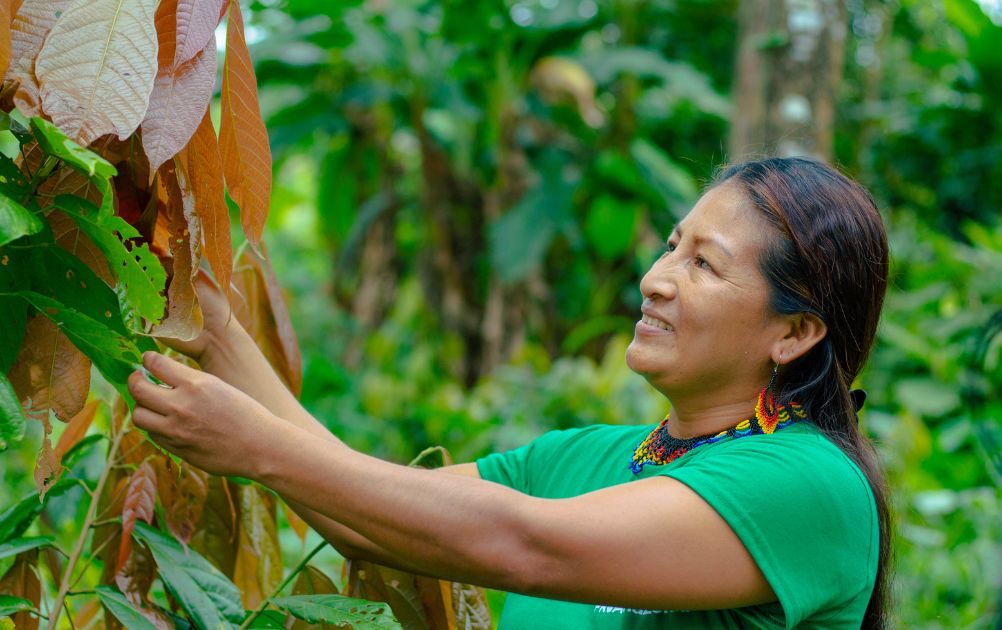
Lessons learned from the application of UNDP´s Performance-Based Payment Policy in Ecuador
As part of the learning pathway on UNDP's PBP instrument to implement performance-based climate finance, we are happy to share lessons that emerged from the first year of implementation in Ecuador, as we did for Costa Rica and Indonesia last year. Ecuador completed the first payment cycle in September 2023, covering 94.75% of the available yearly budget allocated to be implemented through the PBP Agreement (PBPA). Results from the three participating municipalities and presented through Ecuador´s Sustainable Environment Investment Fund (FIAS) demonstrated: i) a reduced rate of forest cover loss; ii) capacity to implement ecosystem restoration activities; and iii) improved capacity to disburse resources for the management of municipal protected areas. The above represents a milestone for Ecuador in its efforts to meet its climate pledge, notably by implementing NDC measures in the forest and land-use sector, as a catalyst for sustainable development.
Using the PBP instrument in Ecuador has achieved great results and yielded a set of valuable lessons to inform replication of this instrument in other countries, particularly when engaging with sub-national governments.
- Use digital technologies and remote sensing to prevent double payments.
This is particularly relevant when mitigation impacts are being pursued by avoiding emissions and by increasing removals in the same geographic area. In Ecuador, two payment-linked key performance indicators (KPIs) address climate mitigation impact that results from land-use change dynamics, measuring: i) native forest conversion rate, and ii) number of hectares restored. As both indicators concern forest cover and land-use dynamics, it is essential to use digital technologies (such as GIS) to overlap geospatial data to differentiate these results during the independent assessment process.
- Ensure flexibility in the allocation of financial resources to deliver payments based on different performance scenarios.
Ecuador´s PBPA envisioned a pre-defined yearly allocation of resources among KPIs and municipalities based on implementation capacity and geographic surface area of each municipality. This provided little flexibility to reallocate payments from underperforming indicators to well-performing indicators. As municipalities might have different implementation capacities, which will determine different performance scenarios, it is fundamental to allow flexibility to allocate budget according to the actual verified results. The same applies to the yearly distribution of the budget allocation to respond to different performance scenarios in different years (either under or over performance, further including bonus or deductions, as relevant). This is essential when working with municipalities in megadiverse countries, where not only their capacities can be different but also the local ecosystems and socio-economic realities in which they operate. Ecuador´s case illustrates the relevance of these differences, because not only municipalities participate in the PBP implementation, but also jurisdictions gathering more than one municipality in one unit. This calls for more flexible performance thresholds.
- Anticipate risk-mitigation measures to address high political turnover.
Managing time is essential for the implementation of any PBPA. Serious delays are expected in circumstances where there is high political turnover, as government officials at different levels need to understand and have a sense of ownership over the project and PBP approach, and there is a learning curve to manage. The above requires having adequate measures in place such as identifying a technical focal point who might not change despite political turnover, ensuring constant communication with government counterparts, securing written commitments and agreements, and ensuring that new political priorities are well understood and linkages with the on-going project commitments are established.
- Guarantee adequate and effective communication among stakeholders.
This is not only relevant for the implementation of the PBPA, but also to ensure that potential beneficiaries have sufficient information about the key characteristics of the Agreement. For example, in Ecuador, initial communication with municipalities have led to perceived barriers which delayed the integration of social and environmental safeguards and reporting requirements. Municipalities saw compliance with safeguards as a barrier, under the perception of their inability to conform. This was addressed by introducing the notion of a stepwise approach to the integration of safeguards, in a similar way as in Costa Rica or Indonesia. Nonetheless, it is recommended to discuss and agree on the criteria for social environmental safeguards, as well as communicate its use as bonuses or as exclusionary criteria, prior to sign of the PBPA with the Responsible Party.
- Ensure sufficient funding and flexibility for the Independent Assessment process.
As mentioned in the lessons learned from Costa Rica and Indonesia´s PBPAs, the Independent Assessor (IA) plays a key role in validating results and providing recommendations to strengthen delivery. For example, as part of a stepwise approach, indicators can be revised and strengthened to further demonstrate the application of safeguards, which entails increased complexity and attention in the process to assess results. Therefore, it is fundamental to allocate sufficient financial resources and ensure flexibility to amend the contract with the IA as needed. Such amendments may include: i) updating the validation methodology; ii) higher detail for assessing compliance with safeguards; and iii) adding additional personnel with relevant skills for the independent assessment.
- Pay careful attention to the institutional setup of the PBPA.
UNDP´s PBP Policy establishes that UNDP signs a PBPA with a Responsible Party (FIAS in Ecuador) for its execution. However, in some cases, like in Ecuador, the actual performance of results can be done by other stakeholders (municipalities). This situation could be common in many countries and demand an institutional set up where the Responsible Party sings additional subsidiary agreements with the final beneficiaries. While this is efficient in terms of avoiding multiple PBPAs, it might increase slightly the operational costs and will require additional and more complex coordination among stakeholders. Choosing between multiple PBPAs or one single PBPA with various subsidiary agreements depends on a number of factors specific to the local context, e.g. appetite to sign multiple PBPAs, existence of a Responsible Party capable of signing subsidiary agreements, as well as holding institutional relationships, institutional mandates, the necessary accreditations to receive financial resources, among others.
This blog concludes the presentation of country-specific lessons. As announced before, given the importance of integrating social and environmental safeguards and mainstreaming gender into PBP implementation, a follow up blog will be delivered as part of this series.



